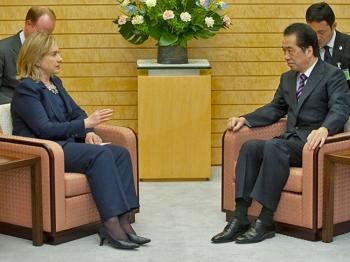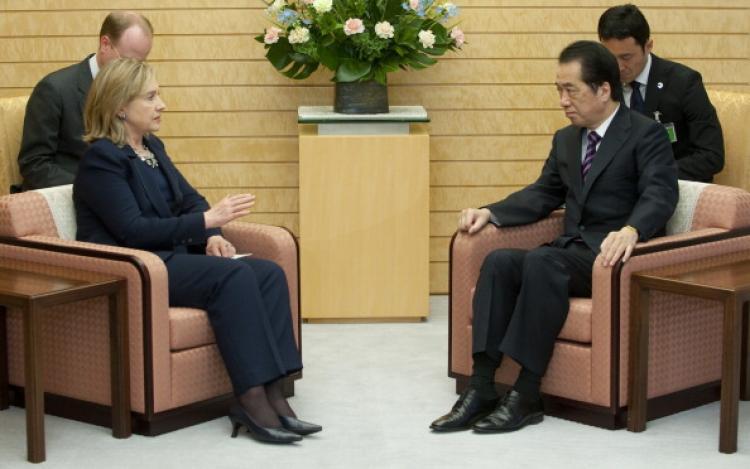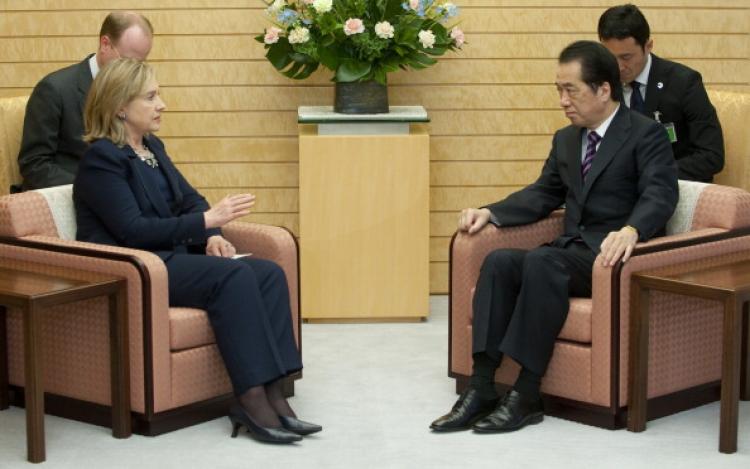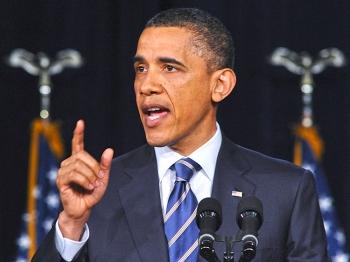Secretary of State Hillary Clinton met with the Japanese Prime Minister Naoto Kan on Sunday in Tokyo in show of support and to discuss further assistance from the United States to the earthquake and tsunami stricken nation, an important ally to the United States.
“We are honored to be of assistance to you during this very difficult period and we are very confident that Japan will recover and will be a very strong economic and global player for years and decades to come, ” said Clinton in her remarks before meeting with Japanese Prime Minister Naoto Kan in Tokyo.
Secretary Clinton’s visit, the first high level visit by an American official since the disaster struck, comes at the heels of an announcement made by Tsunehisa Katsumata the chairman of the Tokyo Electric Power Company (TEPCO) that a full recovery of Japan’s nuclear meltdown would take six to nine months from now.
Katsumata said on Sunday at a press conference that it will likely take up to nine months before the nuclear crisis is completely under control, and three more months to stop the radiation leak.
The March 11 earthquake and tsunami destroyed the cooling and power systems the Fukushima Daiichi nuclear power plant operated by TEPCO. Radiation has been leaking into the air, ocean, and soil ever since, with engineers scrambling to figure out how to stop further contamination.
“It will take three months to ensure that radiation leaking from the nuclear power plant is in a continual decline,” said Katsumata.
Katsumata says what’s most urgent at the present time is to ensure there are no further hydrogen explosions at any of the reactors. He also wants to decrease the radiation leaking from the wrecked power plant.
“It is also important to prevent water contaminated with radioactive substances from the No. 2 reactor leaking to the sea,” he said.
TEPCO Vice President Sakae Muto said that the fuel rods will not be removed from the nuclear reactors within the next nine months and that would be conducted in the next phase.
Katsumata said that TEPCO would sell some of its assets, and take measures such as cutting employee salaries in order to reimburse people who were affected by the nuclear catastrophe.
Katsumata is reportedly planning to submit his resignation in late June during a stockholder’s meeting. The company is probing into allegations that human error might also have played a role in triggering the initial crisis.
During her visit, Clinton also assured Japan that the United States would further offer “whatever we can that is appropriate from both our government and private sector as you guide this recovery forward.”
In his remarks, Japanese Foreign Minister Matsumoto expressed appreciation to Secretary Clinton for the support shown by the United States, including assistance from U.S. forces, the dispatch of American nuclear experts. “That has been a great encouragement for us,” he said.
The U.S. rescue operation Tomodachi, meaning “friend” in Japanese, has provided around-the-clock support in Japan. Roughly 20,000 troops have worked in the past month including U.S. airman, soldiers, and marines to clear away the devastation and repair landing strips.
Last week, Japan partially reopened Sendai Airport to commercial flights. The airport had been completely battered by the tsunami.
Hillary Clinton Visits Japan, As Nuclear Crisis Drags On
Hillary Clinton, the US Secretary met with Japanese officials on Sunday in Tokyo to show support during Japan’s nuclear crisis. Hillary Clinton met with Japanese PM Naoto Kan and other officials
Save

Japanese Prime Minister Naoto Kan sits alongside US Secretary of State Hillary Clinton during meetings at the Kantei in Tokyo, April 17, 2011. Saul Loeb/AFP/Getty Images
Updated:





